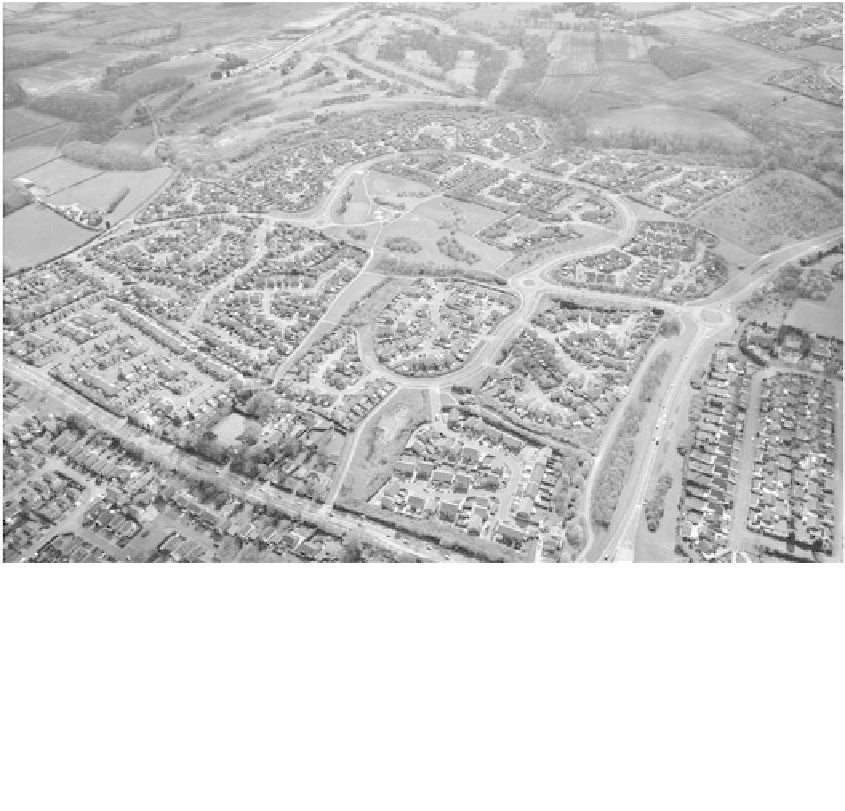Environmental Engineering Reference
In-Depth Information
These motorisation trends are also reflected at the city level, as the following examples
demonstrate (
Tables 1.3
,
1.4
and
1.5
) (Kennedy et al., 2009; Kenworthy, 2011). The use of
energy in transport in cities is very variable, dependent not only on levels of development,
but on the cultural context, and the needs for energy in transport and other sectors (e.g. housing
and industry). For example, urban transport accounts for about 50 per cent of energy use in
the Bangkok Metropolitan Area, and the city level of CO2 emissions is three times the national
than the national average, the other two exceptions here being Cape Town and Denver.
Although growth in levels of motorisation is dependent on the context, income levels,
availability of cars and motorcycles, and regulations on the necessary standards for driving
and insurance, the actual ownership decision also depends on the availability of infrastructure
and parking. The trends in road construction are variable and different strategies have been
adopted in the cities towards infrastructure (Kenworthy, 2011), including road space per
inhabitant and the overall amount of ground level space available (
Table 1.5
).
The problem here is that the space available in many cities is limited, as they were not
designed for the car, and the space is often used for many different purposes, not just traffic.
While 20-30 per cent of all land is taken by roads in US cities, the corresponding share for
Figure 1.17
Middlesbrough, UK. These types of sprawling suburban areas are perhaps the most common
suburban housing style in the Western industrialised world, and are almost completely dependent
on car usage for travel. Residents emit a large amount of transport CO2 emissions per capita.
If (or when) the price of oil rises, these types of developments will become very vulnerable;
travel by the petrol car will become too expensive and there will be large drops in house values;
some areas will perhaps become redundant.
Source
: Jonathan Spruce/Tees Valley Unit.


